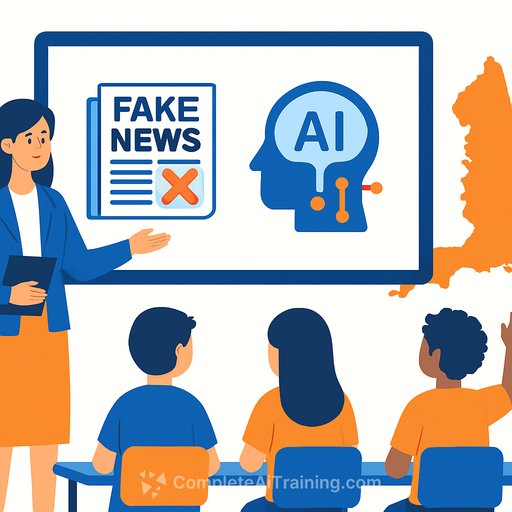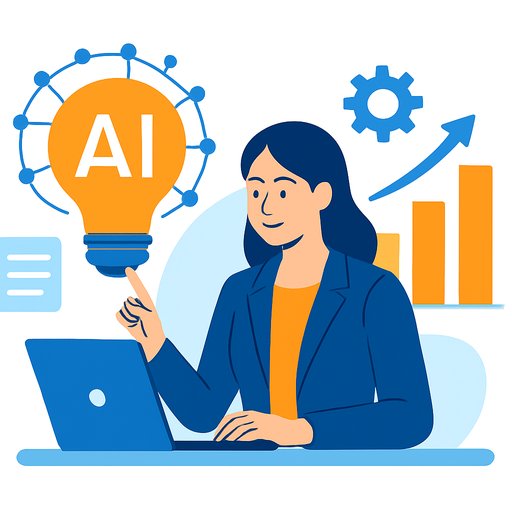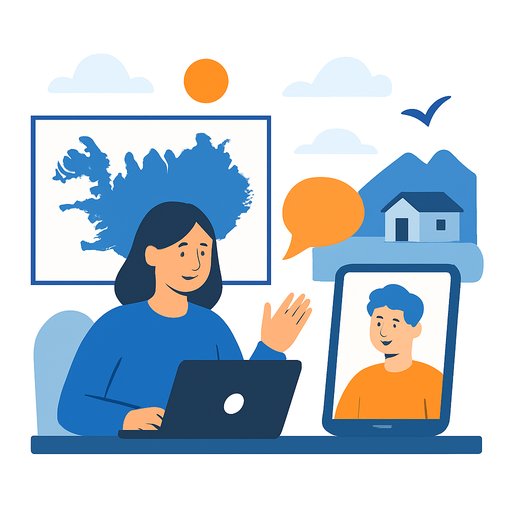From Education to Anthropic: What Impact Will AI Have on Learning?
AI is moving fast. In a recent conversation, education leaders explored what that means for schools with Neerav Kingsland, an education veteran now leading strategy work at Anthropic (Claude). The throughline: be optimistic about new tutoring and teacher tools, be cautious with young learners, and start running real pilots now.
Key takeaways
- AI tutors are viable today for early reading and math; expect 60-90 minutes of adaptive tutoring per day to become normal in well-run classrooms.
- Teacher co-pilots that surface live feedback and planning support can free time for facilitation, discussion, and higher-order tasks.
- Young students should not use base chatbots directly. Use vetted "app layer" tools with pedagogy, scaffolds, and safeguards built in.
- Expect cheating. Redesign assessments to mix in-class writing, oral exams, and AI-inclusive tasks with clear disclosure.
- School models will shift: targeted tutoring for core skills, then teacher-led discussion, projects, and real-world work.
- Help students practice experimentation and risk-taking; add "manage a small team of AIs" as a new literacy.
- AI can narrow gaps: high-quality instruction scales at low marginal cost if schools get implementation and culture right.
- Model capabilities are climbing from minutes to hours of autonomous work; policy and practice should keep pace.
Why this matters now
Model quality and autonomy are improving on a steep curve. That opens real possibilities in classrooms but also raises stakes for safety, assessment, and student development. For a clear vision of opportunity and risk, see Anthropic's Machines of Loving Grace.
What works today
- AI tutors for K-5 reading and math: Tools like Amira, Ello, and Super Teacher show strong promise for decoding, fluency, and procedural math with immediate feedback.
- Teacher support: Products such as CourseMojo and Study Fetch use AI to analyze student work in real time, surface misconceptions, and streamline planning.
Use these as structured stations, not babysitters. The teacher stays in the loop, monitors progress, and intervenes with mini-lessons or conferences.
The app layer for K-12 is non-negotiable
Direct, unsupervised use of base models by children isn't wise. The right applications wrap the model with:
- Curriculum alignment, guardrails, and age-appropriate language.
- Scaffolds, pacing, motivational loops, and mastery checks.
- Audit trails and educator controls for visibility and safety.
Procurement prompts worth asking vendors: What's your pedagogy? How do you log and review student interactions? How do you handle data privacy? What content filters and refusal behaviors are in place for minors? How will teachers see and act on insights?
Assessment and academic integrity
- Mix formats: in-class writing, oral defenses, whiteboard problem-solving, and project check-ins.
- Use AI transparently: require students to disclose prompts, outputs, and edits; grade the thinking process as well as the final product.
- Design tasks AI struggles to fake: local data, live collaboration, artifacts with version history, and personal reflection tied to class experiences.
Publish a short, clear policy: where AI is allowed, how to cite it, and what constitutes misuse.
A balanced school day
For early grades: 60-90 minutes of focused AI tutoring (reading and math) with the teacher supervising progress and pulling small groups. Use the rest of the day for:
- Teacher-led discussion, read-alouds, and writing.
- Hands-on projects, makerspace time, and outdoor learning.
- Explicit SEL, routines, and community building.
For older students: add subject-specific AI labs (science analysis, language coaching, feedback on drafts) and capstones that require real data, interviews, and public presentations.
Skills students need next
- Experimentation and risk-taking: short cycles of try, test, reflect. Grade the process.
- Managing "AI teams": break complex work into roles (researcher, planner, critic, coder), prompt and coordinate multiple agents, and synthesize results.
- Meta-cognition: watch for "intellectual deflation." Require students to do hard thinking before and after AI assistance.
Equity and access
High-quality instruction at low marginal cost can help under-resourced schools catch up-if leadership builds culture around consistent use, follows data closely, and blends human support where it matters most. Families gain options too: short daily tutoring at home can prevent slips in literacy and numeracy.
90-day pilot plan
- Pick two use cases: K-2 reading tutor and teacher co-pilot for feedback or planning.
- Define success: minutes on task, growth on curriculum-aligned checks, reduced teacher prep time.
- Set guardrails: age gates, app-layer only, disclosure rules, and parent communication.
- Train a lead team: one AP/coach, three teachers, one IT/data partner. Run a tight weekly review.
- Share results in month three and decide on scale-up, pivot, or sunset.
What to watch next
Models are moving from seconds to hours of reliable autonomous work. Expect bigger chunks of knowledge work to be handled by AI with human oversight. Plan for staged supervision, versioning, and audit trails in both classroom and central office workflows (master schedule, routing, interventions).
Practical resources
- Machines of Loving Grace (vision, opportunities, and risks)
- AI courses by job for educators building practical skills with classroom-ready tools
- Claude certification for teams piloting Anthropic-based solutions
Bottom line
Start small, move fast, and keep your teachers in the center. Use app-layer tutors to lock in daily skill growth, give teachers better visibility and time, and help students practice the habits that will matter in an AI-first job market. Stay humble, measure everything, and iterate hard.
Your membership also unlocks:




